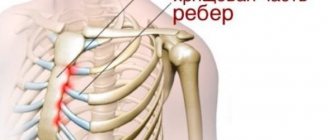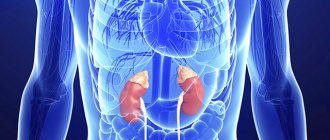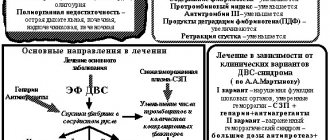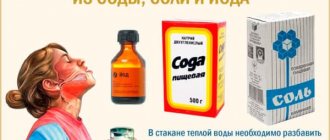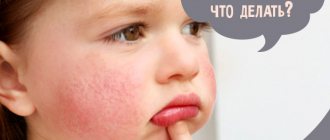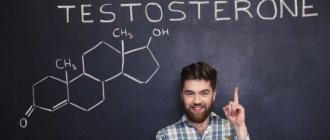This is the article that many of you have been waiting for. What on earth can you do to relieve premenstrual irritability, breast pain, acne, headaches and other symptoms? Let me start by saying that for most of you, premenstrual syndrome (PMS) may be a thing of the past. I'm talking seriously. PMS responds well to natural treatment and responds quickly. After using this treatment, patients say: “I was surprised when I just started my period. I didn’t even feel them coming.” - No irritability. No headaches. No food cravings. It is quite possible. Doesn't this surprise you? Most women report some physical or emotional changes in the second half of their cycle. About twenty percent of women experience symptoms severe enough to seek medical help. It is not surprising that PMS is characterized as something inevitable and familiar to all women. And yet I tell you that it doesn't have to be this way. I stand by this opinion. PMS is common, but it is not inevitable. In fact, PMS is curable. That's why I dedicated an entire post to solving the problem of PMS.
Controversial Diagnosis
PMS was first described in the early 1980s and has been the subject of controversy ever since. There are several reasons for this. Firstly, the term PMS can be used inappropriately. Too often it is used to trivialize all female emotions. And this is a problem. As a woman (and human), you have a right to emotions. Your emotions should not be dismissed by your partner or family member as simply “hormonal.” - In fact, I consider this word itself incorrect when it is used to describe a woman’s condition. It's just crazy to me that the word hormones has become an insult. This means that female hormones themselves have a negative effect on mood, which, as we will learn later in this article, is simply not true.
PMS symptoms
Despite all the contradictions, I am convinced that PMS is real. The most common emotional symptoms are irritability, anxiety, depression and tearfulness. The most commonly reported physical symptoms are sleep disturbance, fluid retention, bloating, palpitations, joint pain, headaches, brain fog, food cravings, chest pain and acne.
If symptoms occur within ten days before your period and then disappear during or shortly after bleeding, then the condition is considered PMS.
Change the menu
To alleviate the symptoms of PMS, it is advisable to divide the daily portion into 5-6 small meals. Eating smaller amounts of food frequently improves peristalsis and prevents swelling.
It is necessary to limit the intake of salt and salty foods, as this further aggravates water retention. Simple carbohydrates should be replaced with foods rich in complex nutrients, such as rice, potatoes, cereals, legumes, fruits and vegetables, which are rich in fiber, minerals and vitamins and aid digestion.
Consumption of foods rich in calcium, magnesium, and omega fatty acids also improves the picture of premenstrual syndrome. It is recommended to limit the consumption of alcohol and caffeine.
Premenstrual worsening of symptoms
If you're experiencing a temporary worsening of symptoms you already normally experience (such as headaches, digestive problems, acne, and sugar cravings), then it's not PMS. This is a premenstrual worsening of symptoms. Here, treating the underlying condition will be most effective. This way, it will not be exacerbated by the natural transition to inflammation that occurs at the end of the luteal phase. You may also benefit from some of the strategies discussed in this article.
What causes PMS?
Your hormones themselves are not to blame for PMS. Neither estrogen nor progesterone have inherent negative effects on mood or anything else. On the contrary, hormones are useful. Estrogen and progesterone are powerful mood and metabolism boosters. For example, when estrogen rises in the follicular phase, you will feel great because estrogen increases serotonin levels, increases muscle strength, and creates better insulin sensitivity. To some extent this is wonderful. But if estrogen rises above normal, then your health will be far from good.
Rise and fall of estrogen
Estrogen is like an interesting and charismatic friend: she's fun to hang out with, but after a while she starts to get annoying. Moderate amounts of estrogen are great. But when there is too much estrogen, it is overstimulating and can cause chest pain, fluid retention, irritability and headaches. Decreased estrogen levels can also cause unpleasant symptoms. After all, estrogen levels cannot remain high forever, no matter how much you might want them to. Estrogen must drop at the end of the cycle, and when this happens, it brings serotonin and dopamine with it. And the higher your estrogen levels, the more significant the decrease will be. When estrogen wears off, it can cause fatigue, night sweats, and migraines.
Progesterone to the rescue
During periods when estrogen levels rise and fall, progesterone should come to your aid. If your body produces enough progesterone, it will calm you down and protect you from the ups and downs of estrogen. Progesterone is also able to convert allopregnanolone into a neurosteroid that calms the brain in the same way as the neurotransmitter GABA. It stabilizes the hypothalamic-pituitary-adrenal axis. With sufficient production of progesterone and healthy sensitivity to it, you will be in a calm state thanks to allopregnanolone until menstruation. If you don't produce enough progesterone , or your levels drop quickly, [1] or you have altered sensitivity to progesterone, [2] you will experience symptoms of mood swings.
The traditional approach to PMS and hormonal fluctuations is to balance your hormones with hormonal contraceptives. Yes, this stabilizes the situation, but not in a good way. There will be no more hormonal fluctuations, but this is because hormones will no longer be produced. By getting rid of everything, you can lose something useful too.
Hormonal contraceptives can also cause known symptoms, but should not be confused with PMS. In this case, these are side effects. [3]
Treatment
Relieving the condition during PMS is a feasible task, but you need to make some efforts. As a rule, doctors treat PMS syndrome by selecting treatment depending on its characteristics, that is, on an individual basis. For example, a woman may be referred to a psychologist, where emotional relief and behavior correction are carried out. In addition, girls are often prescribed various means of calming effect. To get rid of various types of pain, anti-inflammatory drugs are prescribed.
See also: What does bloating during menstruation mean?
If, as a result of the tests performed, information appears about the insufficiency of the second phase of the cycle, then hormonal therapy will be the right choice. When mental symptoms dominate, antidepressants are indispensable. In addition, in women before the menstrual period, the level of substances such as serotonin and histamine increases, so doctors in this case prescribe antihistamines. As has already been indicated, the most important thing is to maintain a correct lifestyle; in this case, your health will not let you down. Then it will become much easier to fight PMS. Taking vitamins, minerals, maintaining proper nutrition, giving up bad habits - all these factors will have a positive impact on your health.
Hormonal stability
The natural approach to hormonal fluctuations is different. It does not seek to eliminate hormonal fluctuations; instead, they are perceived as a normal and beneficial process. Your hormones fluctuate, so they are produced within the cycle in which ovulation occurs. This is the only way to create them. Let's put it this way: if hormones are produced, they will fluctuate. No need to balance hormones. You just need to be able to adapt to their ups and downs. This ability to adapt to hormonal fluctuations is what I call hormonal resilience. New research supports the idea of hormonal resistance and suggests a genetic component. The cells of women with premenstrual dysphoric disorder (PMDD) respond differently to hormones compared to women who do not experience the condition.
PMDD (Premenstrual Dysphoric Disorder) is a condition of severe premenstrual depression, irritability, or anxiety. Occurs in approximately one in twenty women.
So perhaps you were lucky enough to be born with genes that protect you from premenstrual symptoms. If not, you can protect yourself by developing hormonal stability in three simple steps:
- Increase your progesterone and GABA levels.
- Stabilize estrogen and metabolize it properly.
- Reduce inflammation to calm your hormonal and neurotransmitter receptors.
Did you notice the third point? Reduce inflammation. Why is this so important for PMS?
Psychological stabilization: how sleep, rest and calmness affect PMS
Women who lead a lifestyle that includes adequate rest, sleep and psychological peace [Verified source] note that they have little or no premenstrual syndrome.
Work must be alternated with pauses of rest and relaxation, taking regular short breaks. It is also necessary to avoid stressful influences and not enter into conflict situations, since emotional overstrain causes an increase in spastic muscle activity, which increases pain in the lower abdomen during PMS.
Sleep should last at least 8 hours, and you need to have time to fall asleep before 23:00. Why such a time? The answer is simple: during these hours the production of the sleep hormone melatonin begins, which, by the way, is associated with the synthesis of the joy hormone serotonin, and its maximum concentration is reached at 2 a.m., after which it fades away. Therefore, falling asleep after 23:00 disrupts the functioning of neuroendocrine regulation, reduces the production of melatonin and serotonin, which increases the symptoms of premenstrual syndrome.
The role of inflammation
Inflammatory cytokines put you at greater risk of developing PMS. [4] Why? Because chronic inflammation distorts hormonal communication. More precisely, inflammation impairs both progesterone production and progesterone receptor sensitivity. So you end up needing more progesterone just to feel its calming effects. Inflammation also downregulates GABA receptors, which further impairs the response to progesterone and worsens PMS. Finally, inflammation interferes with estrogen detoxification and increases estrogen sensitivity. Thus, inflammation can cause:
- less progesterone and GABA
- more estrogen
Inflammation is the perfect storm for PMS. Luckily, you can reduce inflammation with anti-inflammatory strategies (fasting in progress). You can also benefit from the natural anti-inflammatory effects of progesterone. [5] Let's start with progesterone.
Medications
Relief medications of varying effects help to cope with PMS. For example, non-steroidal anti-inflammatory drugs or medications to relieve spasms will help relieve pain, we are talking about tablets such as:
- Analgin;
- Ketoprofen;
- Piroxicam;
- Paracetamol;
- Aspirin;
- Minalgin et al.
The tablets must be taken strictly following the accompanying instructions.
The main rule of drug treatment is this postulate: do not take pills in large quantities, do not exceed the norm.
At first, it may seem like the pill didn't have any effect. This is especially true for antispasmodics. But it is important to remember that the improvement may “delay” a little and occur after 25 minutes, but then the result will linger for a much longer time. When a woman’s nervous system is affected, she should start taking sedatives. Herbs like motherwort, chamomile or valerian will help cope with this symptom. You can also use Novopassit or Glycine.
Increased levels of progesterone and GABA
Progesterone is central to the PMS picture because it protects you from the ups and downs of estrogen. It also reduces inflammation and calms mood by enhancing the neurotransmitter GABA. You want more progesterone and more GABA so you can experience more benefits from progesterone. This section will give you strategies for both progesterone and GABA. So, you want to produce more progesterone, and also, more GABA, to get the maximum benefit from progesterone. The ways to obtain both progesterone and GABA will be described below.
Increasing levels of progesterone and GABA can lead to relief of PMS.[6]
How do you know if you have enough progesterone?
Symptoms of low progesterone include PMS, heavy bleeding during the premenstrual phase, premenstrual bleeding or spotting, and prolonged or heavy menstrual bleeding. You can measure progesterone through a blood test done during the mid-luteal phase or by monitoring your temperature. Remember, the goal of your test is to detect a consistent increase in temperature in the luteal phase. As we learned above, progesterone levels are difficult to raise and difficult to maintain. No wonder premenstrual symptoms are so common!
Physical activity as a method of relaxation
Exercise can help reduce discomfort on special days [Verified source]. In no case should they include heavy physical activity, since the main task is to relax the body, relieve tension, saturate the blood with oxygen and activate metabolic processes. During premenstrual syndrome, the most beneficial effects on the body are:
- walks in the open air;
- yoga;
- breathing exercises;
- aerobic physical activity.
It is necessary to play sports, but only in a gentle manner, avoiding heavy and exhausting physical labor.
Diet and Lifestyle to Increase Progesterone and GABA Levels
Progesterone is produced each cycle by the corpus luteum, which is the result of healthy functioning of the ovarian follicle throughout its 100-day journey to ovulation. Raising progesterone levels is a long-term project.
Reduce your intake of foods that lead to inflammation
Reducing the intake of foods such as sugar, wheat and cow's milk will help in maintaining proper progesterone levels:
- Reduced inflammation leads to better ovulation and therefore more progesterone.
- With less inflammation, the sensitivity of both progesterone and GABA receptors increases.
Of all the foods that cause inflammation, cow's milk seems to be the most critical for PMS, probably because it can trigger the release of histamine.
Special Topic: The Curious Connection Between PMS and Histamine
If your list of PMS symptoms includes headaches, anxiety, and brain fog, then you may have histamine intolerance. Histamine is a normal part of your immune system, but too much of it can cause unpleasant consequences. Histamine intolerance is often worsened just before menstruation , because estrogen increases histamine levels and vice versa. Progesterone, on the other hand, reduces histamine levels, which is essentially one of the ways progesterone relieves PMS. Treatment for histamine intolerance may include:
- increasing progesterone levels or taking progesterone,
- reducing consumption of histamine-stimulating foods such as dairy products and alcohol,[7]
- reducing consumption of histamine-containing foods such as red wine, cheese, bone broth and fermented products,
- taking vitamin B6, which regulates the level of DAO enzyme, which breaks down histamine.[8]
Histamine intolerance can also cause pain during menstruation and may also cause ovarian cysts .
Reducing histamine levels is a large part of why vitamin B6 and natural progesterone help so much with PMS and other conditions.
Reduce your alcohol intake
Alcohol reduces allopregnanolone levels [9] and interferes with the calming effects of progesterone. Alcohol can also worsen histamine intolerance. Of course, you can drink wine or beer occasionally, but to avoid causing low progesterone and PMS symptoms, please don't drink more than four drinks a week.
Reduce stress
Experiencing severe stress doubles the risk that PMS will be very difficult to bear. [10] There are several things going on here. First, adrenaline directly blocks progesterone receptors and depletes GABA, which itself can cause PMS. In the long term, stress also impairs ovulation and depletes progesterone. Finally, low progesterone levels can further destabilize your stress response or HPA axis. [11] This is why you may notice the delayed effects of stress. Today's stress can lead to weeks of PMS in the future. Reducing stress is critical for hormonal stability. If you suffer from PMS, you have a reason to say, “I need to go for a walk, or get a massage, or spend the entire day reading a novel to balance my hormones.”
Exercise
Exercise helps with PMS [12] because it reduces stress levels and reduces inflammation.
Natural Remedies for Menstrual Cramps
If you are experiencing symptoms of menstrual cramps, it is important that your doctor properly diagnose the causes.
Although some natural remedies show some promise, there is not enough research at this time to conclude their effectiveness. Here are some of the most commonly used remedies:
Omega-3 fatty acids
Omega-3 fatty acids are found in fish such as salmon, mackerel, sardines and anchovies.
They are also available in fish oil capsules, which may be the preferred form since many brands filter out any contaminants in the fish, such as mercury and PCBs. At least eight studies involving a total of 1,097 women examined the relationship between diet and menstrual cramps and found that consuming fish oil seemed to have a positive effect on menstrual cramps.
Animal studies suggest that two compounds in fish oil, eicosapentaenoic acid (EPA) and docosahexaenoic acid (DHA), may reduce prostaglandin levels.
In one small study, 21 young women took fish oil (containing 1,080 milligrams eicosapentaenoic acid (EPA), 720 milligrams docosahexaenoic acid (DHA), and 1.5 milligrams vitamin E) daily for two months, followed by placebo pills for two months . Another 21 young women took a placebo for two months, followed by fish oil for two months. The results showed that women experienced significantly fewer menstrual cramps when they took fish oil.
Fish oil capsules are sold in pharmacies, health food stores and online. Look for the active ingredients EPA and DHA on the label.
Fish oil capsules may interact with blood thinners such as warfarin (Coumadin) and aspirin. Side effects may include dyspepsia and bleeding. To reduce the fishy taste, it should be taken immediately before meals.
Magnesium
Magnesium is a mineral that is naturally found in foods such as green leafy vegetables, nuts, seeds and whole grains.
It is also available as a dietary supplement. Magnesium is required for more than 300 biochemical reactions. It helps regulate blood sugar levels and is essential for normal muscle and nerve function, heart rate, immune function, blood pressure and bone health. In 2001, researchers from the Cochrane Collaboration reviewed three small studies that compared magnesium and placebo for the treatment of dysmenorrhea.
Overall, they found that magnesium was more effective than placebo for pain relief, and the need for additional medications was less with magnesium use.
Across the studies, there was no significant difference in the number of side effects or adverse effects between magnesium and placebo.
High doses of magnesium can cause diarrhea, nausea, loss of appetite, muscle weakness, difficulty breathing, low blood pressure, irregular heart rate and confusion. It may interact with certain medications and diseases, such as osteoporosis, high blood pressure (calcium channel blockers), and some antibiotics, muscle relaxants, and diuretics.
Acupressure
Acupressure is a traditional healing practice based on the same principles as acupuncture.
Instead of using needles, pressure is applied to acupuncture points. A point that is often recommended by acupuncturists for menstrual cramps is called Point 6. Although there is only preliminary research on acupressure for menstrual cramps, it is a simple home remedy that is often recommended by alternative practitioners.
To find the point, acupuncturists suggest feeling the bony point of the inner ankle. From this point, draw an imaginary line from your knee to your inner ankle. This is approximately four finger widths from the inner ankle. It's not on the shin bone, but just near it towards the back of the knee.
With your thumb or middle finger at a 90-degree angle to the skin, apply gradually increasing pressure. Wait three minutes. The pressure should not be painful or uncomfortable.
Acupressure should not be done if you are pregnant. This should also not be done on damaged or infected skin.
Other natural remedies for menstrual cramps:
- Low fat diet
- Vitamin E
- Vitamin B1
- Dill
- Aromatherapy
- Massage
- Calcium
- Manual therapy
- Exercise
Calcium
Although many supplements have been proposed to relieve PMS symptoms, currently only calcium has demonstrated consistent therapeutic benefit.
One of the largest studies of calcium for PMS, published in the American Journal of Obstetrics and Gynecology, examined the use of calcium supplements in women with moderate to severe premenstrual symptoms. Study participants took either calcium or a placebo for three months.
The researchers found that women who took calcium had a 48 percent reduction in their total number of symptoms.
In another analysis published in the Archives of Internal Medicine, researchers analyzed data from 1,057 women who developed PMS over 10 years of follow-up and 1,968 women without PMS. They found that women who had a high intake of calcium from dietary sources had a significantly lower risk of PMS.
About four servings per day (equivalent to about 1,200 mg calcium) of low-fat cottage cheese or milk, fortified orange juice, or low-fat other dairy products such as yogurt were associated with a lower risk of PMS.
Interestingly, calcium from supplements was not associated with risk of PMS.
Foods high in calcium include:
- Dairy
- Sesame seeds
- Almond
- Leafy green vegetables
The study also found that women who had a high intake of vitamin D (a vitamin that regulates the absorption and metabolism of calcium) from food sources equivalent to approximately 400 IU per day had a lower risk of PMS.
A more recent study published in the journal BMC Women's Health assessed blood levels of vitamin D (25-hydroxyvitamin D) and found that vitamin D levels were not associated with the risk of PMS overall, but were inversely associated with the risk of specific menstrual symptoms such as breast tenderness, diarrhea or constipation, fatigue and depression.
Diet
The most common dietary recommendations are to limit sugar intake and increase complex carbohydrate intake.
Some people may benefit from lowering their sodium intake, which can help reduce bloating, water retention, and breast swelling. Limiting caffeine is another common diet change due to the association between caffeine and PMS symptoms such as irritability and insomnia.
Exercise
Sticking to regular exercise can help improve PMS symptoms. Regular aerobic exercise, such as brisk walking, jogging, swimming or cycling, releases endorphins, dopamine and serotonin (chemical messengers that can boost mood) and has positive benefits for energy and sleep.
Stress management
Breathing exercises, meditation and yoga are some natural ways to reduce stress and promote relaxation. Many women who use anti-stress techniques feel more confident and in tune with their needs in the weeks leading up to their period.
CHART of herbs and supplements to increase progesterone and GABA levels
| Product | Description | How it works? | Application |
| Doctor's Best, Magnesium (chelate), 240 drops. | Magnesium is a “mineral miracle”, necessary for hormonal balance, nutrition and calming the nervous system. This is the first point in the treatment of PMS. It improves premenstrual symptoms so dramatically [13] that some scientists have suggested that magnesium deficiency is the root cause of PMS. [14] | Helps with the production of steroid hormones, including progesterone. Normalizes the effect of progesterone on the central nervous system. But the benefits of magnesium don't end there. It also reduces inflammation, regulates the stress response, and enhances GABA activity. | 300 mg magnesium glycinate per day. |
| Now Foods, P-5-P, 90 drops. | Vitamin B6 is the next strongest remedy for treating PMS. It is effective for both PMS and more severe forms of PMDD. | Vitamin B6 (in coenzyme form pyridoxal 5-phosphate or P5P) works with almost every symptom of PMS. It is necessary for the synthesis of progesterone and GABA. Reduces inflammation and promotes healthy estrogen detoxification. Vitamin B6 is a natural diuretic and relieves histamine intolerance. | 20 to 150 mg per day, distributed throughout the day (eg, 50 mg twice daily). You can feel the effect within an hour. |
| Nature's Way, Vitex, 400 mg, 100 drops. * | Vitex agnus-castus (sacred vitex or Abraham tree) is an extract from the berries of a large Mediterranean tree. We got acquainted with the herbal medicine Vitex as a treatment for hypothalamic amenorrhea . Vitex is also great for treating PMS. Recently, a large systematic review of 17 randomized controlled trials found Vitex to be safe and effective for the treatment of PMS and PMDD. [15] | By suppressing the pituitary hormone prolactin, Vitex enhances ovulation and progesterone production. It also contains opiate-like components that calm the nervous system. [16] Vitex has a positive effect on mood, relieves fluid retention and chest pain. | 400 mg per day, taken in the morning before breakfast, because this is when the pituitary gland is most sensitive. Stop taking it within the first five days of your period. |
| Life Extension, Selenium Complex, 100 drops. | Selenium is a key nutrient for progesterone production. It is an anti-inflammatory, and having enough selenium has been correlated with a reduced risk of endometriosis . [17] . | Necessary for the formation and maintenance of the integrity of the corpus luteum. | 100 to 150 mcg per day to account for the amount you get from food. The safe upper limit for selenium from all sources is 200 mcg per day. |
| Now Foods, Natural Progesterone | Bioidentical progesterone with liposomal delivery is an option worth considering after you have tried other treatments. | Progesterone relieves PMS because it is converted to the calming neurosteroid allopregnanolone and because it promotes healthy histamine removal. | Take transdermally during the luteal phase. |
| Nature's Way, Zinc Chelate, 30 mg | Zinc - in a bioavailable chelate form, is a powerful immunostimulant and anti-inflammatory agent. Performed well in a recent clinical trial on PMS. [18] | Reduces inflammation and histamine levels, which in turn increases progesterone and GABA levels. If you are deficient in zinc, then you are more likely to have severe PMS. [19] | 30 mg per day immediately after lunch, since lunch is usually the largest meal. Do not take zinc on an empty stomach, as this may cause nausea. |
Discuss all supplements with your healthcare provider before combining them with prescription medications.
Notes on the table
Vitamin B6 works well in combination with magnesium; you can immediately choose the complex from the MAGNE B6 . Please note that long-term use of more than 200 mg of B6 may cause nerve damage.
Food sources of selenium include seafood, organ meats, and Brazil nuts . For example, one serving of salmon contains 40 mcg of selenium.
Natural treatments are the best way to prevent PMS. Follow these recommendations on all days of your cycle, not just during the premenstrual period.
PS 5% discount with code RAQ630 works for EVERYONE and in every iHerb order, regardless of the order amount and is summed up with all store discounts!
Workouts & women's cycle
Cycle phases and how to train
- Menstrual (1-5 days). In the first days, it is better to remove abdominal exercises, strength exercises on the legs, inverted body positions (hyperextension, etc.). So as not to increase blood circulation and cause even greater spasm. You can do low or moderate intensity workouts, upper body workouts (shoulders/back), and light stretching. Or you can give up training altogether. According to how I feel.
- Proliferative or Growth Phase (6-13 days). It’s cool to focus on progressing in strength and endurance: increase weight in strength training, do HIIT workouts, CrossFit, etc. Perhaps you yourself have noticed how a lot of strength and energy appears during this period
- Ovulation (14-17 days). Here you can feel yourself to the fullest. An excellent period to set records in strength indicators and give peak load. But it is important to know that during this period there is a lot of estrogens in the blood. These hormones affect collagen production. Because of this, ligaments and tendons become very pliable. Therefore, maximum attention to technique to avoid injuries.
- Postovulatory (16-24 days)
- Luteal (18-28 days). People have PMS. May occur 2-10 days before the start of menstruation. Often the 4th phase is not considered separately, but is combined into one Luteal phase. During this period, it is better to reduce the weight of the weight and add the number of repetitions, train at moderate intensity, add walking or cardio.
Remember, everything is individual. This is general information based on the functioning of the hormonal system. It may be different for you. Therefore, it is very important to keep a diary for at least 2-3 months and monitor your body during exercise.
Researchers at the University of Sports in Vancouver claim that regular exercise in girls reduces breast soreness, bloating and girls are less likely to suffer from mood swings compared to those who do not exercise.
